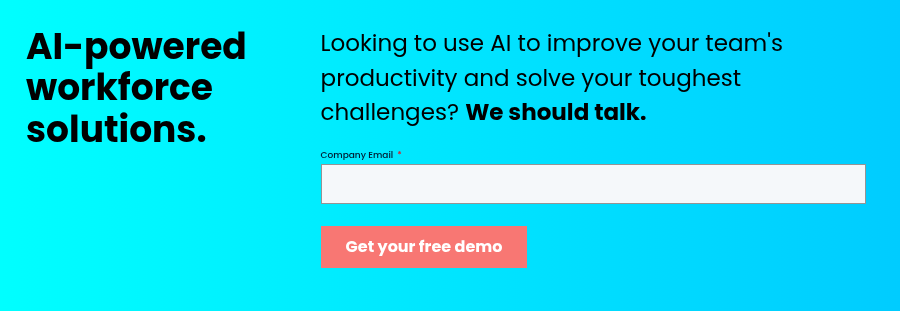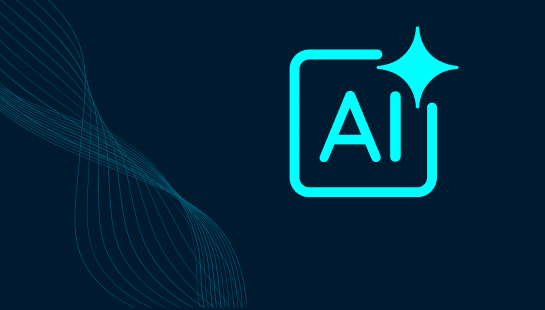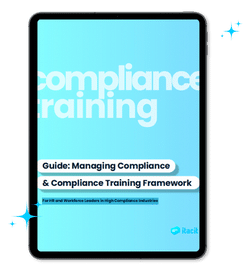AI systems can predict which employees might leave your company with 20-30% accuracy. This capability gives you a chance to step in before they resign.
Smart organizations now make use of artificial intelligence to identify flight risks and create customized retention strategies. Their success makes sense – 94% of employees are more likely to stay at companies that invest in their development. Companies that use AI-driven feedback tools have seen a 25% improvement in employee satisfaction because they address concerns quickly.
Today’s workplace faces significant challenges. Remote work statistics show that 22% of U.S. workers will work entirely from home by 2025. Career growth matters too – 74% of employees would look at new roles if they offered development opportunities. These changes mean companies must find new ways to keep their teams involved and loyal.
AI retention strategies analyze trends in performance, surveys, and communication data. The technology spots potential problems before they grow through data analysis and predictive modeling. This allows for targeted interventions that prevent staff turnover. Recognition plays a crucial role – 69% of employees say regular acknowledgment would motivate them to work harder and stay longer. AI tools help deliver this recognition at the right moments.
This piece examines how AI reshapes retention efforts. The scope ranges from predictive analytics that identify flight risks to AI-powered development plans that help employees grow with their company.
Understanding the Role of AI in Employee Retention
AI has become the lifeblood of successful employee retention programs in 2025. 75% of HR leaders say their managers feel overwhelmed and lack the tools to lead effectively, so AI steps in to bridge these critical gaps. These technologies serve as practical solutions that solve retention problems through data processing capabilities that human teams can’t match.
How AI complements traditional HR strategies
AI and traditional HR approaches create a powerful foundation to keep your best talent. Standard HR functions have changed from administrative roles into strategic positions through AI. This transformation happens through several key mechanisms:
AI brings objective data-driven decision-making that cuts human bias. AI systems analyze facts to reach reliable conclusions instead of relying on gut feelings or limited personal knowledge. This objectivity helps spot retention risks before resignation letters land on your desk.
Your HR team gains freedom to build meaningful relationships with employees and address complex human concerns. AI handles time-consuming, repetitive tasks. 56% of companies using AI for HR made automating routine activities their priority by 2024.
Employee experiences improve through AI-driven customization. Recent surveys show 66% of executives believe AI makes positive changes in how employees use HR services. Employees feel valued rather than replaceable when they receive tailored development plans and communications.
AI proves effective for retention through these capabilities:
- Predictive analytics that identify potential departures
- Personalized learning recommendations based on individual career goals
- Real-time feedback collection and sentiment analysis
- Automated recognition systems that acknowledge achievements promptly
AI increases human judgment rather than replacing it. FORE Enterprise’s CEO notes, “A human brain can’t figure out how to create the best outcome for the company and for the workplace, but maybe AI can”. The technology gives your leadership team tools to understand, support, and retain people better.
Overview of AI tools used in 2025 HR tech stacks
HR technology stacks include several specialized AI tools that work together to boost retention by mid-2025. HR leaders doubled their AI pilots and implementation plans between June 2023 and January 2024. This quick adoption shows how fast these tools proved their worth.
Detailed platforms like Teamspective emerged as Leadership Enablement Platforms that help organizations improve leadership quality. These systems create AI agents that actively boost employee engagement, performance, and team collaboration.
Culture Amp combines engagement surveys with performance management to measure the workplace culture’s effect on retention. Their Natural Language Processing analyzes comments and turns feedback into applicable information. Lattice uses machine learning to detect sentiment in feedback and flag potential biases while integrating performance management with engagement surveys.
Eightfold AI’s deep learning neural networks match employees with internal positions based on capabilities rather than keywords. Their talent intelligence engines analyze billions of data points to identify career paths and predict future skills needs.
Companies now use tools like iTacit’s compliance training platform that provides 24/7 support. Employees always have access to needed information, which reduces training time and increases satisfaction by removing frustrating barriers.
Visier offers advanced people analytics with AI capabilities that provide predictive insights on retention and performance. Non-technical users can ask complex workforce questions and get visualized answers through its natural language query system.
FORE Enterprise offers a specialized solution that forecasts employee turnover risks, calculates attrition costs, and recommends data-driven interventions. Their algorithms reduce burnout by matching employee scheduling priorities.
AI continues to revolutionize HR. Gartner projects a neutral global jobs impact through 2026, despite job displacement concerns. AI solutions will create over half a billion net-new human jobs by 2036 as they increase or autonomously deliver tasks.
Predictive Analytics for Identifying Flight Risks
Predictive analytics is the life-blood of modern retention strategies. IBM’s AI systems can forecast employee departures with an impressive 95% accuracy rate. This remarkable capability has helped IBM save around $300 million in retention costs. Let’s get into how these systems work and why they’ve become vital for forward-thinking HR departments.
Turnover probability models using historical data
AI algorithms now analyze multiple data streams to create highly accurate turnover probability models. These systems look at information from sources of all types, including:
- Historical workforce trends
- Employee engagement surveys
- Performance evaluations
- Communication patterns
- Time tracking systems
These models excel at detecting subtle patterns that human analysts might miss. AI creates a detailed flight risk profile for each employee by analyzing variables like compensation history, tenure, performance ratings, and engagement metrics.
Machine learning approaches work especially well. AI Models achieve accuracy levels above 80% in predicting employee departures. These models consistently show several critical predictors of turnover: past work years, wage changes, work hours, age, job position, and training hours.
Some fascinating patterns emerge across different organizations. Employees with fewer company years, younger age, or shorter average work hours typically show higher turnover probability. AI models have revealed that more change in hourly wage throughout the year often associates with increased departure risk – a finding that challenges conventional wisdom.
Classification models serve as simple prediction tools that answer a straightforward question: “Will this employee leave or stay?”. More sophisticated survival analysis models go further by predicting the time an employee might resign. This creates a timeline of risk that enables precisely timed interventions.
Early warning systems for high-risk employees
Early warning systems (EWS) show the real-life application of predictive analytics. They give HR teams useful insights before employees submit resignation letters. These systems monitor employee data continuously and flag potential issues that might indicate dissatisfaction or flight risk.
EWS excel at identifying problems, not just problem employees. Leaders can address systemic issues that might drive turnover across multiple positions by detecting patterns across teams and departments.
These early warning systems send clear, pre-disciplinary signals whenever performance metrics indicate potential issues. The core team plays a vital role since they know employees best and can spot subtle behavior changes. Managers can start meaningful conversations about personal or professional challenges affecting job performance using AI-generated insights.
AI systems might flag these signs:
- Excessive overtime or sudden absences
- Changes in communication patterns
- Decreased engagement in team activities
- Changes in productivity metrics
- Unusual collaboration network changes
Organizations should establish written directives that outline which events need monitoring and analysis, along with specific thresholds for each category. Clear reporting practices and intervention strategies must be defined to ensure consistent application across organizations.
iTacit’s AI Assistant shows how modern AI tools complement EWS by supporting compliance training and employee development, two significant factors in retention. Such systems provide deeper insights into organizational dynamics that influence retention by automatically analyzing communication patterns and engagement metrics.
One HR leader puts it well: “No longer do managers have to wait for annual reviews to find poor engagement and identify flight risks”. This real-time capability enables prompt, targeted interventions that address employee concerns before resignation thoughts arise.
These systems aren’t “set it and forget it” programs, they need continuous commitment and follow-through from leadership to produce meaningful results. Predictive analytics becomes progressively more accurate through regular monitoring and refinement. This creates a powerful retention feedback loop that benefits employees and organizations alike.

AI for Personalized Employee Development Plans
AI technology has turned personalized employee development from a dream into reality. Companies that use AI-powered learning solutions see remarkable results, up to 15% improved operational efficiency and 20% increased efficiency.
Skill profiling and learning path generation
AI revolutionizes traditional skills assessment by creating complete digital profiles of your workforce’s capabilities. AI-powered skill profiling gets into multiple data sources and builds an accurate picture of each employee’s strengths and areas for growth.
Johnson & Johnson shows this approach through “skills inference”, their AI analyzes employee data across HR systems, learning platforms, and project management tools. They follow a three-step process:
- Skills taxonomy: Defining future-ready skills needed for long-term success
- Skills evidence: Selecting appropriate data sources for analysis
- Skills assessment: Using language models to measure proficiency on a 0-5 scale
The numbers tell the story, Johnson & Johnson saw a 20% increase in professional development platform usage after implementing AI-based skill profiling. This approach gives leadership heat-map data that shows skills distribution across regions and business lines, which helps in strategic workforce planning decisions.
AI algorithms are great at finding connections between skills and creating a foundation for individual learning paths. These systems look at an employee’s current skills, career goals, and company needs to suggest specific development recommendations. A marketing professional wanting to move into data analytics will get AI-suggested training based on their skill gaps.
These individual-specific paths create real results:
- A global healthcare company reports 40% higher course completion rates
- Employee participation in personalized training improved by 60%
- Better knowledge retention through content that matches individual learning styles
Integration with AI-based LMS platforms like iTacit
Learning Management Systems (LMS) have grown from simple content delivery tools into complete development ecosystems powered by AI. iTacit shows this evolution with its full-function LMS that offers SCORM compliance and flexible course authoring tools.
Employee training LMS platforms are particularly valuable because they merge with other business systems. iTacit naturally connects with HR information systems, which keeps data accurate across platforms and reduces manual work. This integration handles data updates in real-time or on schedule, keeping information accurate throughout employee development.
iTacit helps employees through their entire journey, from onboarding through compliance training and skill development for future roles. Its AI features help create personalized learning paths for frontline employees, making it valuable in industries where regulatory proof matters most.
iTacit’s helps with compliance training and offers round-the-clock access to information. The AI Assistant streamlines access to information and makes employees happier by removing frustrating barriers when frontline teams need to react.
AI-enhanced LMS platforms benefit the whole organization. They support strategic workforce planning by spotting skills patterns across teams, departments, and regions. Executives can make smart decisions about development investments, like building decision science capabilities where gaps exist.
By 2025, successful organizations will use AI to identify and address retention risks through ongoing, personalized development. With 86% of employees expecting AI-related training from employers, companies that use these technologies gain a clear advantage in keeping talent.
Real-Time Feedback Collection and Sentiment Tracking
Employee sentiment tracking in real-life situations has become crucial to retention success. Research shows that organizations using automated feedback systems experience a remarkable increase in employee participation and satisfaction, which leads to better retention rates.
Pulse surveys powered by AI sentiment engines
Pulse surveys have evolved beyond traditional annual feedback methods. These quick questionnaires, sent weekly, bi-weekly, or monthly, help measure employee satisfaction, participation, and overall sentiment about specific topics. The best part? Organizations don’t have to wait for year-end reviews to understand their workforce’s morale.
AI sentiment engines turn these simple surveys into powerful retention tools. These systems analyze open-text comments from employees through natural language processing (NLP) and automatically sort responses as positive, negative, or neutral. Each feedback gets a numerical sentiment score, which turns qualitative responses into measurable data.
The results speak for themselves:
- AI-powered sentiment analysis can spot negative trends before they become serious retention issues
- Organizations can send targeted surveys during key employee lifecycle moments, from onboarding to exit
- Machine learning algorithms are up to 94% accurate in categorizing employee emotions, matching human experts
“Just as managers can log into a mobile app to see a view of their team’s experience at any time, employees should have the chance to deliver feedback as they experience a significant work or life event,” explains Julie Larson-Green, Qualtrics’ Chief Experience Officer.
Advanced AI solutions take a closer look at comment context, not just individual words. This captures subtle meanings that simple keyword systems don’t handle well. These tools connect responses to key retention factors, leadership quality, career growth chances, diversity, training quality, and work-life balance.

Feedback loop automation and escalation workflows
Collecting feedback is just the beginning, taking action completes the cycle. AI-powered systems now automatically ask for employee feedback after important experiences like onboarding, training, promotion, returning from parental leave, or exit. This timing helps get more relevant responses.
The automation extends to handling responses. Modern systems send tailored messages to employees based on their HRIS profile information, including recognition for milestones or life events. This personal touch makes employees feel valued and heard.
Good feedback loops create continuous learning within organizations. When sentiment analysis spots concerning trends, escalation workflows alert managers or HR representatives. A study points out that “Regular monitoring and analysis of outcomes allow for the identification of any discrepancies and the implementation of corrective measures”.
Data visualization turns complex sentiment data into useful dashboards. HR leaders can quickly spot areas where employee sentiment is positive or needs attention. Qualtrics offers mobile reporting that lets managers check their team’s experience data anytime.
iTacit’s AI Assistant adds value by providing extra support channels where employees can ask questions about compliance training or raise concerns. This round-the-clock availability helps address issues quickly before small problems become reasons to resign.
The most effective sentiment tracking systems merge with other HR technologies through SFTP or API connections. This integration allows data to flow naturally between systems and creates a detailed view of employee experience. With the right setup, organizations can build a positive feedback environment where employees share thoughts openly, knowing their input creates meaningful change.
By 2027, companies that use mature AI-powered feedback systems will have a crucial advantage in retention. They will address concerns before employees leave and create cultures where people feel truly valued.
AI Chatbots for Scalable HR Support
HR teams of all sizes now use AI chatbots as their first line of support. Gartner’s research shows chatbots are the top priority for HR leaders who use AI in their roles. These virtual assistants take care of basic questions and admin tasks. This lets HR professionals spend more time on ways to keep employees happy.
Natural language understanding in HR chatbots
Modern HR chatbots get their strength from natural language processing (NLP) and natural language understanding (NLU). These technologies help chatbots understand what employees mean, not just the words they use. Let’s say an employee asks about vacation policies or benefits. The system looks at the question and:
- Figures out what the employee wants (information, action, etc.)
- Picks up relevant details (department, role, location)
- Gets information from connected systems
- Creates a clear, customized response
This smart technology makes conversations feel human rather than mechanical. One employee said, “I was surprised by how well it understood my complicated question about parental leave policies.”
The benefits of this technology go beyond just making things easier. AI chatbots boost retention in several ways:
- Time savings: HR teams get back about 4.5 hours every week by automating common questions
- 24/7 support: Employees get help any time, from anywhere
- Clear information: Chatbots give the same accurate answers every time, unlike human responses that might change
- Better costs: Companies can help more employees without hiring lots more HR staff
- More trust: Chatbots build trust by giving accurate information and making fewer mistakes
Use case: iTacit’s AI Assistant for compliance training
iTacit’s AI Assistant shows how chatbots help keep employees through better compliance support. This tool gives quick, secure access to company policies, procedures, and training materials.
Employees type their questions about policies or procedures. The system gives them answers based on their role, pulled from the company’s verified information. This means frontline workers see only what applies to their job, which cuts down on confusion.
The results speak for themselves:
- 87% of users found answers more easily with the AI Assistant
- Managers saved 4.5 hours weekly they used to spend answering questions
- 93% of HR teams learned something new about what their employees needed help with
The assistant works great with regular training programs. Workers can find procedures quickly while they work, without bothering their bosses. This helps bridge the gap between training and real-life application.
The dashboard shows another way to keep employees happy by tracking common questions. HR teams can spot knowledge gaps and create targeted training before these gaps affect employee satisfaction or compliance.
iTacit’s solution stands out from general AI tools with business-grade security features like role-based access and SSO authentication – vital for protecting HR data. The system only uses your company’s internal knowledge base, which prevents wrong information from public AI models.
These AI chatbots create a support system that makes employees feel valued and heard. This leads to better engagement, less frustration, and more employees staying with the company.
AI-Driven Internal Talent Marketplaces
AI-powered marketplaces are pioneering talent retention strategies that help organizations retain their top performers. These digital platforms help employees find new roles while staying with their current company.
Matching employees to internal roles using AI
AI-driven internal talent marketplaces act as skill-matching engines that connect your workforce based on capabilities rather than job titles. The system analyzes employee profiles and identifies their current skills along with potential growth areas. Mastercard’s “Unlocked” platform connects employees with projects, volunteer work, open roles, and mentoring opportunities that match their existing and desired skills. Their success shows in the numbers – 90% of employees actively use the platform, which has generated 500,000 project hours.
These marketplaces produce impressive results. A Fortune 500 professional services firm saw a 30% increase in internal applications after implementing HiredScore AI for Talent Mobility. Internal candidates proved 1.4 times better than external ones. The platform made employees 2.3 times more likely to take new roles within the company.
The technology works by:
- Analyzing employee data including experience, interests, skills, time-in-role, and performance
- Offering individual-specific recommendations within existing workflows
- Delivering opportunities through email or Microsoft Teams
- Automatically matching candidates with openings based on company mobility rules
Career path visualization and mobility tracking
Modern AI marketplaces go beyond basic job matching by visualizing career paths. TalentGuard’s Career Canvas uses AI to suggest optimal next steps based on each employee’s talent profile. Staff members can set career goals and explore various paths to achieve them.
Career mapping tools analyze LinkedIn profiles or resumes to understand an employee’s current position and professional background. Each career path shows average salary expectations, transferable skills, and learning requirements.
Leadership teams get valuable workforce insights from these platforms. Internal mobility dashboards monitor progress at organizational and individual levels. This data helps teams identify departments where mobility succeeds and areas that need improvement.
The financial benefits are significant. Zenith’s AI-powered talent marketplace generated $13.70 million in savings and freed up 11,000 productivity hours through internal mobility. These results explain why 67% of companies report internal mobility’s positive effect on their organization.
Burnout Prevention Through AI Monitoring Tools
U.S. employers lose nearly $300 billion each year due to workplace stress through absenteeism, turnover, and healthcare costs. AI now plays a vital role to identify and prevent employee burnout, which leads to workforce attrition.
Workload analytics and stress signal detection
AI monitoring tools analyze multiple data streams to catch early signs of burnout. These systems track how people communicate and flag negative language or sudden changes in responses that could show increased stress. AI can spot teams with higher burnout risk through sentiment analysis of business conversations, even before visible symptoms appear.
Physiological data has become a powerful way to measure stress. Advanced systems can track Heart Rate Variability (HRV), which shows stress levels when readings are lower. Modern wearable devices collect this data along with:
- Work patterns (hours logged, task completion rates, break frequency)
- Communication trends (response times, tone changes)
- Performance indicators (error rates, productivity changes)
- Physiological signals (heart rate, skin temperature)
Research shows machine learning models can classify stress levels with 91% accuracy using physiological data. These tools spot patterns humans might miss – employees who work more than 50 hours weekly show much higher emotional exhaustion.
AI-generated action plans for team rebalancing
Once detected, AI systems create targeted plans to stop burnout before it gets worse. The algorithms can predict busy periods, spot potential burnout risks, and suggest better ways to distribute work. This hands-on approach keeps workloads balanced across teams.
iTacit’s AI Assistant helps employees by giving them quick access to mental health resources and training materials. The system suggests stress management techniques based on each person’s patterns and needs.
Tools like Workeen AI predict busy times and help create fairer schedules. Managers with large teams find this especially helpful as AI can point out team members who need changes to their workload or extra support.
Healthcare organizations lead the way in using these tools. Nursing teams use AI to study staffing patterns, patient-to-staff ratios, and acuity levels. This evidence helps leaders make better decisions about moving resources and adjusting team structures.
Strategic Planning with AI-Backed Retention Metrics
AI-backed metrics form the foundation of retention planning and give HR leaders solid data to make strategic decisions. Companies that use AI to create new KPIs see wider benefits in arrangement, teamwork, financial results, and efficiency.

Monthly retention dashboards and KPIs
AI-powered smart KPIs turn traditional metrics into practical insights. Organizations that use AI-enriched KPIs can spot problems and get solutions before employees leave.
The AI-enhanced KPIs come in three main types:
- Smart descriptive KPIs blend historical and current data to show critical gaps
- Smart predictive KPIs forecast future outcomes and suggest early actions
- Smart prescriptive KPIs provide AI-recommended fixes for problems
Managers can check their team’s experience data anytime through monthly dashboard visualizations. iTacit’s AI Assistant adds to these dashboards by offering available support for compliance training while collecting valuable data about employee knowledge gaps.
AI dashboards make retention metrics visual and clear. Teams share a common purpose and stay accountable through this clarity. Complex sentiment data becomes easy to understand at a glance, revealing areas where employees feel positive and where attention is needed.
Connecting AI insights with business outcomes
Companies need careful planning to link retention metrics with business results. Organizations using AI to share KPIs become five times better at improving cross-functional arrangement and three times more adaptable than those that don’t.
Maersk’s AI models helped the company rethink its productivity measurements across its global network. The company’s customer satisfaction increased as performance improved throughout the enterprise.
Tokopedia shows another success story. The company looks at millions of merchant and customer data points to boost its merchant quality KPI. Customers find quality merchants, sellers run better operations, and the company creates a more effective marketplace.
The focus should stay on picking the right KPIs that match strategic goals during implementation. A combination of short-term performance indicators and long-term KPIs helps track both daily efficiency and lasting business effects.
Conclusion
The AI-driven strategies discussed in this piece paint a clear picture. AI has changed how companies keep their employees. Companies that embrace these technologies have a major advantage in retaining top talent.
Numbers tell the story. Companies using AI retention tools see 20-30% better accuracy in predicting who might leave and 25% higher employee satisfaction. Tools like iTacit’s AI Assistant cut down training time and handle compliance questions that used to take HR teams 4.5 hours each week.
AI brings unique value to retention efforts. It processes huge datasets to spot patterns that managers might overlook. These tools turn reactive approaches into proactive strategies through early warning systems. They create tailored experiences for employees without needing more HR staff.
AI strengthens your retention strategy by:
- Spotting potential departures before resignation letters arrive
- Creating growth plans that match each employee’s needs
- Tracking team morale as it happens
- Providing round-the-clock support for policy questions
- Connecting employees with new internal opportunities
- Identifying overworked team members early
- Linking retention metrics to business results
Despite AI’s capabilities, human judgment still matters deeply. The best retention programs blend AI insights with thoughtful leadership. AI highlights issues, but managers build the relationships that keep people around.
Companies that delay implementing AI retention tools risk falling behind competitors. These technologies will become standard practice by 2025. The focus will shift from whether to use AI to how well you use it.
You can start with an AI-powered HR assistant like iTacit. It handles compliance training questions while revealing knowledge gaps in your team. Modern work needs smarter retention strategies. With AI tools, you’ll keep your best people involved, growing, and committed to your company’s success for years ahead.










